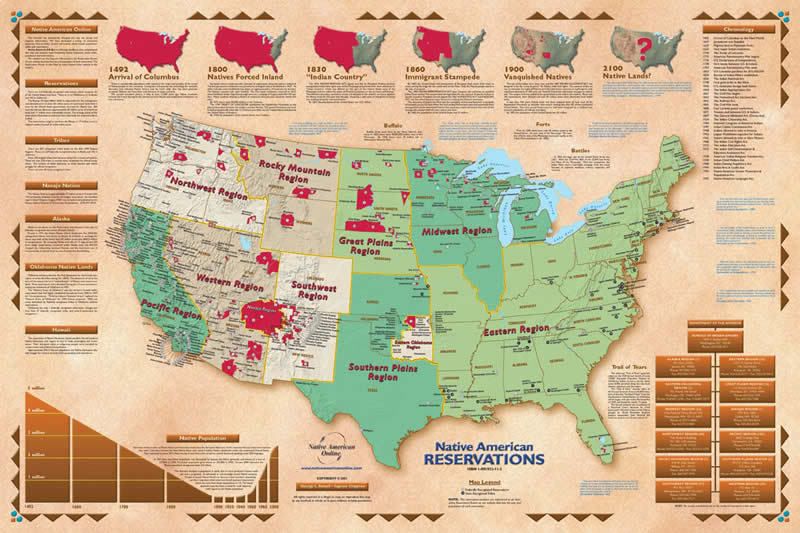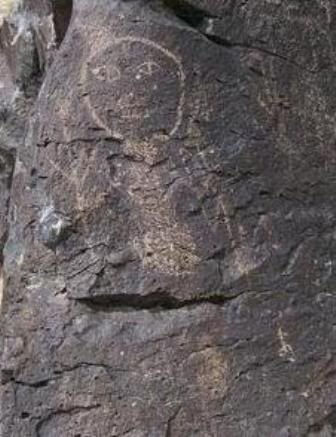(noon. – promoted by ek hornbeck)
The clear origins of the Native American Flute date back several thousand millennia to flutes made of bone, to petroglyphs, and oral history. Unclear “origins” involve the Spanish Conquest insofar as the Spanish stealing the bamboo flute from Asia, and then introducing it to the Five Civilized Tribes. A Cheyenne Flute Maker relayed this to me. The idea goes, that the bamboo flute was made out of river cane by the Five Civilized Tribes after the Spanish “brought” the bamboo flute to the “New World.” Subsequently, river cane flutes then proceeded to be constructed out of cedar wood by the Plains Tribes; hence, its origins within this idea being called Asian – Spanish. However, the Cheyenne Flute Maker said that the tribes already possessed the flute prior to the invasion, and the Spanish may have introduced it to a few. That raises some questions, but the ultimate answer we shall see is one of mystery.
Crossposted at Native American Netroots
What family of trees were flutes being constructed out of then? What are some woods that they are being made out of now? After answering those questions along with some general knowledge in that area, we will proceed to the clear and unclear origins of the flute. The only clear thing is that it’s a mystery who specifically invented the first flutes world wide as old as approximately 82,000 years ago.
The juniper family of trees, including cedar, was used to make the earliest flutes. To illustrate, flutes were possibly constructed out of the Arizona cypress, the Utah juniper, or the Rocky Mountain juniper, but definitely out of the eastern red cedar. The length of the branch used was crucial in determining the overall pitch desired in the flute being made. To be more specific, the distance between the holes on the flute determined the musical scale that the flute would play, which was a process of trial and error to achieve the desired order of notes. Generally speaking, longer and larger flutes were lower in pitch, while shorter and smaller flutes were higher in pitch.
Currently, other woods that flutes are being made out of today besides cedar are the following: maple, cherry, apple, pear, teak, walnut, purpleheart, ash, and spruce. This includes making them out of tree branches as opposed to buying a block of the relevant wood at a hardware store. There were cultural uses of the flute.
According to the guide at the Cherokee National Museum, the flute was used in courting. Furthermore, when the man was successful with the flute in his courting purposes in the matriarchal society of the Cherokee Nation, the woman whom he had successfully courted broke the flute in half. She did so to prevent him from playing it for anyone else. For the Cheyenne, it is historically for courting and personal expression. While some tribes have used the flute in ceremony, it’s crucial to state that some have not – all the tribes are different.
What does all this have to do with the fact that soldiers who became sleepy accused the Cheyenne of performing witchcraft when they heard Cheyenne flute music in the Cheyenne camps? According to the Cheyenne Flute Maker, when the soldiers were in the camps and heard the flute music being played, the soldiers got sleepy and fell asleep. The Doctrine of Discovery states, “to find, discover and investigate whatsoever islands, countries, regions or provinces of heathens and infidels, in whatsoever part of the world placed, which before this time were unknown to all Christians;” and, Henry VII authorized Cabot to “conquer, occupy and possess” any discovered land whatsoever. Let’s think of the question again. What does this have to do with the fact that the soldiers accused the Cheyenne of performing witchcraft? It wouldn’t be the first time in history that fundamentalists associated music virtuosity, originality, and excellence with evil. For example, some thought Paganini played the violin so fast and furious that he was possessed by demons, and some believed Robert Johnson sold his soul to the Devil in order to play the blues. It’s a very broad answer to answer why the soldiers accused the Cheyenne of witchcraft.
Regardless of the grain of truth that may exist in Spain introducing the Bamboo Flute to very few tribes, Spain wished to conquer the world. Ceremonies, languages, Indigenous musical styles, and ways of life were all affected by the invaders. Ceremonies? Hidden or now lost, yet survived in cases. Languages? Pronunciation or now lost, yet survived in cases. Indigenous musical styles? Musical influence from the “Church” modes. Ways of life? Gone as entire tribal entities when comparing past and present in the United States and in Canada; furthermore, try imagining what the above would now be if the invaders had never come. Indigenous population(s) who have been unmolested worldwide would be an exception, but the former and the latter previously mentioned affected cultural aspects and most likely unaffected cultures would require a dissertation. “Columbus was a disease” I heard it once said, as the speaker related how an entire uncommunicating network of different Indigenous tribes no longer do ceremonies to care for Mother Earth because of the genocide. But I digress even further as I add my thoughts in agreement with this (emphasis mine).
Whether it’s pentatonic mode plus a note, or Dorian mode minus a note, or the six note Raga Mahohari mode, such labels are attempts to contemporize the Native American Flute.
The flute was used for courting within relevant tribal customs before and during the time of being actively hunted; it was used for personal expression; it was used for ceremonial purposes. Why is it that today some want to interpret the notes the earliest flutes may have played in terms of a sliver of music theory – the major scale of which at least 80% of Western music is based?
…most Western music is played in a major key: 97 percent of popular American songs, and 73 percent of classical music is in a major key.
Tunnel vision is being applied to universal sound which is owed to the vibrations of the harmonic series and crosses cultural boundaries as a universal language, but little minds always like things much smaller, don’t they? The scissor tail sings the Lydian dominant scale, except just prior to mating. Then he sings the blues scale. Witchcraft indeed.
The brains behind Dreams Kaimin is Dr Takuro Endo, a neurologist who has made a science, and a lucrative CD business, out of selecting the right music to induce sleep. He divides it into three categories: melodies that fire the imagination; those that are calming and relaxing; and music that should, within ten minutes, slow the brain down to the point of unconsciousness.
But a fictitious flute spell is not what needs to be broken. How is it that all these different cultures worldwide developed the flute?
Symbols of the American Indian come down to us in many forms. Some are beaded on elaborate wampum belts, others are found on strips of buffalo hide and more are seen chiseled on stone. Probably the most reliable, in terms of graphic interpretation, are those found in the Southwest commonly called ‘rock art’. According to some estimates there are over 50,000 “known” stone petroglyphs and pictographs in the Southwest and West alone. Many more probably exist in remote areas or covered by modern civilization. Certainly, more existed prior to the European invasion.
Flutes are the earliest known musical instruments. A number of flutes dating to about 40,000 to 35,000 years ago have been found in the Swabian Alb region of Germany. These flutes demonstrate that a developed musical tradition existed from the earliest period of modern human presence in Europe.[1]
Kokopelli, ancient humpbacked flute player, is the Southwest’s most popular icon. Presented here are more than 300 flute player images, including a great many that have never been published. Along with new information about the meaning and origin of Kokopelli, some of it challenges our current understanding of this unmistakable character. Explore the range of the flute player and see how it extends south into Mexico, north into Canada, west into Nevada, and east into the plains of Colorado, Texas, and Oklahoma.
Flutes made of bamboo are found in many musical traditions.The Gamelan in Indonesia use them.
Some bamboo flutes include:
The Indian flute, one of the oldest instruments of Indian classical music, appears to have developed independently of the western flute. The Hindu god Krishna is said to be a master of the instrument.
How is it that all those different cultures worldwide developed the flute without communicating? My best and only guess, is they “recognized their tune.”
Shortly after this research, Maman met French physicist Joel Sternheimer, who discovered the vibratory frequency of elementary particles. Long before the “string theory”, Sternheimer was transposing certain molecular structures into musical patterns, creating “the music of the molecules.”
Like Maman’s cellular research, Sternheimer found that if there was a problem in an organic structure, the molecules of that structure did not vibrate, but if they heard the string of notes they recognized as their tune, they began to vibrate again.
There are no clear specific origins of the flute of any culture, except for the stories sacred to that culture and the obvious elements of the instrument’s construction with its cultural usages. What is clear is that each is a unique stylistic interpretation of a universal language, but let the mystery remain of who created it first individually –
or collectively in its birth across the globe.
Some likely have made false claims, but let each unique song be sung and the spell of differentiation be broken – while maintaining the individual integrity of all.
…The earliest possible evidence of Shamanic activity in the Americas comes from the recently excavated Jones-Miller site in Colorado (Stanford 1979). At this Plano kill site, dating to about 8,000 B.C., bison herds were slaughtered, apparently by driving them between ice-glazed snow banks. A post hole was discerned by the excavator, and near it were found an antler flute, a miniature point, and other objects that might have belonged to a Shaman…





15 comments
Skip to comment form
Author
In orange
http://www.dailykos.com/story/…
do you play?
When we recognize the true spiritual legacy of our authentic founding ancestors and their modes of expression for the land we now live on, we might find the salvation we’re looking for.
We were hunting animals and breaking their long bones to suck out the marrow … and when we have long bones with marrows sucked out, how unlikely is it that we would not discover the flute? When we discovered the flute, we would find that bones of different lengths make different sounds, then find out that if there is a hole and its covered up, the sound changes.
How could we not discover the flute? As people, how could we not?
Whether we discovered the flute multiple times in multiple continents or discovered it at the beginning of the long trek and brought it with us – of course we discovered the flute.
That is not surprising in the least.
What is odd is that peoples that came late to Europe could then arrive on the shores of America and think that they came bringing the flute to their brothers here. I put it down to a lack of Vitamin C in the journey over and resulting chemical imbalances in the brain.